How a Minnow Pond Turned Darlington Raceway Into a NASCAR Jewel
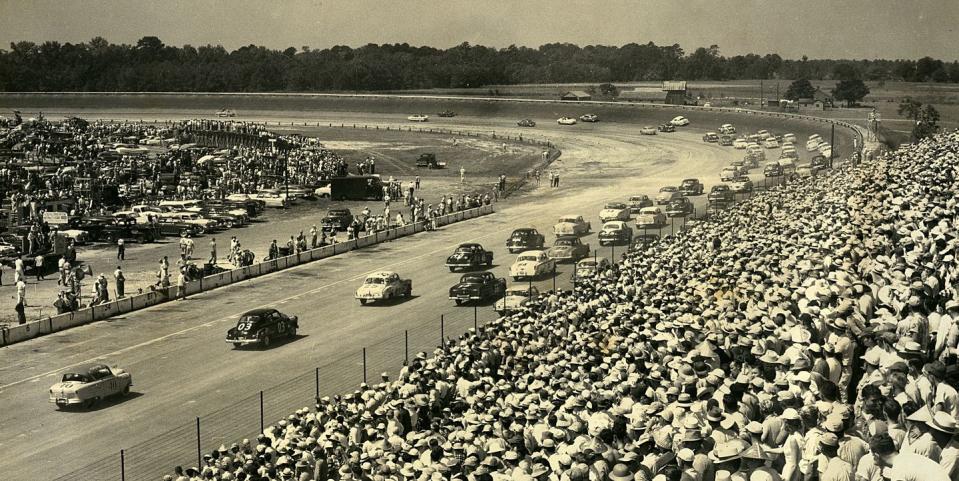
Construction of Darlington Raceway began in 1950 and went well until a neighboring landowner asked original track developer Harold Brasington to slightly alter the track’s western end.
Sherman Ramsey owned a nearby minnow pond, and back then minnow ponds were almost sacred ground in the rural South.
Brasington’s original design would have destroyed the pond, so he agreed to shorten and reconfigure the western end to preserve Ramsey’s beloved pond. (It remains a semi-official tourist attraction on race weekends).
It’s difficult to tell at ground level—from, say, the infield or along pit road–but Darlington Raceway is not a true oval. Far from it.
The track that today measures 1.366 miles is called an oval only because that’s about as close to being a suitable description as anything else.
But an overhead of NASCAR’s second-oldest active track (after Martinsville Speedway) shows Turns 3-4 at the western end as tight, abrupt, and steeply banked. In contrast, Turns 1-2 at the eastern end is more sweeping, wider, and somewhat flatter. Certainly, track builder Harold Brasington didn’t plan for that in early 1950, when he rough-sketched his proposed speedway on a paper napkin at a local cafe.
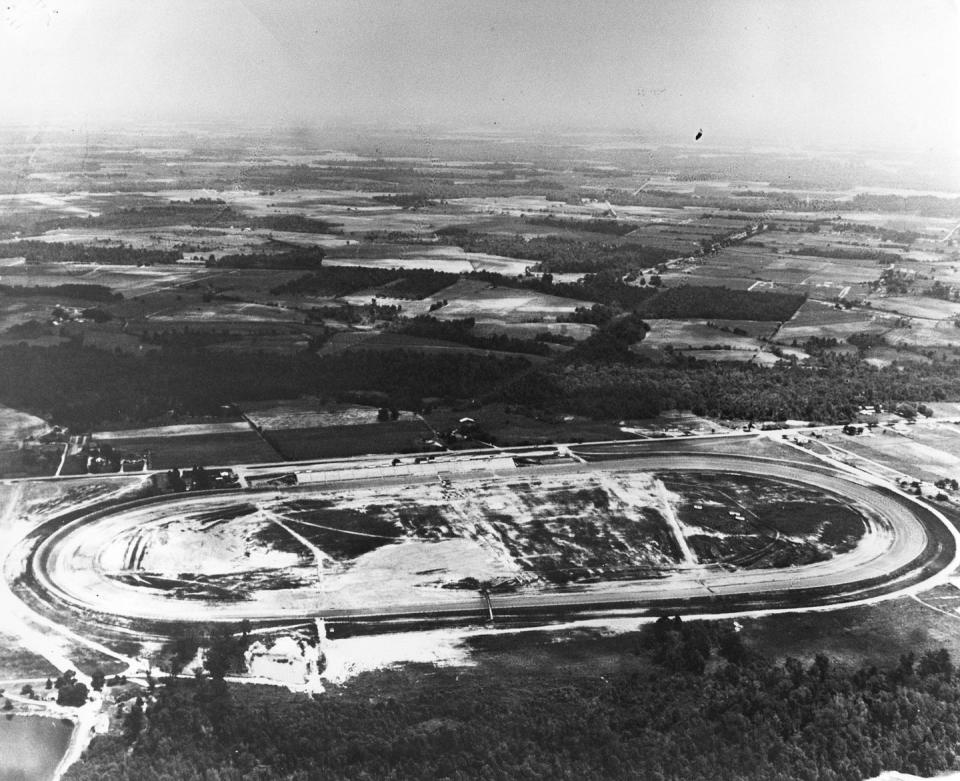
When Brasington and several friends broke ground 73 years ago, they planned to build and pave a standard 1.25-mile true oval suitable for stock cars and Indy-type cars. He had attended the 1948 Indy 500 and was impressed with the spectacle, the thousands of fans, and—more importantly—the financial impact on the community. He wanted that same national attention and financial windfall for his small hometown in northeastern South Carolina.
His idea was to build a track west of town and promote a 500-mile stock car race on a holiday weekend, mimicking Indy’s annual 500-mile Memorial Day classic. With land available and heavy-duty equipment sitting ready, he forged ahead.
Construction went well until a neighboring landowner asked Brasington to slightly alter the track’s western end. Sherman Ramsey owned a nearby minnow pond, and back then minnow ponds were almost sacred ground in the rural South. Brasington’s original design would have destroyed the pond, so he agreed to shorten and reconfigure the western end to preserve Ramsey’s beloved pond. (It remains a semi-official tourist attraction on race weekends).
That patch of water is why Turns 3-4 at Darlington Raceway are tighter and turn abruptly away from that end of the track. With plenty of room and no such impediments at the eastern end, Brasington ended up with what is generally called “an egg-shaped track,” one that’s fat and wide at one end and skinny and narrow (and more treacherous) at the other.
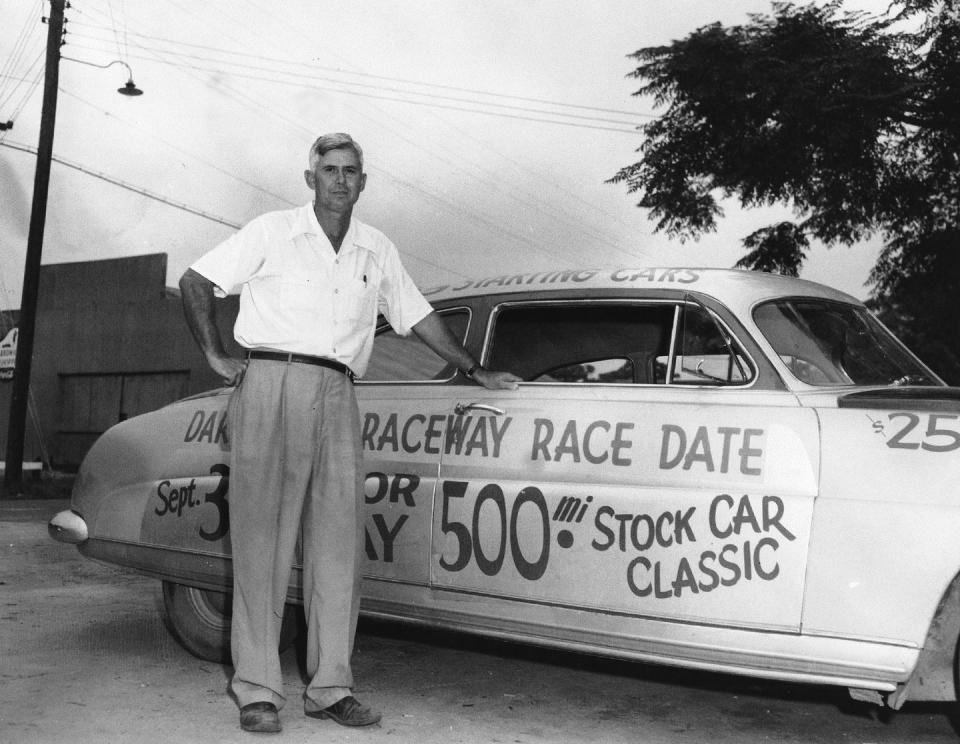
“The difference in the turns is why Darlington has always been so difficult,” says retired driver and Hall of Fame candidate Ricky Rudd, winner of the track’s 1991 spring race. “Most speedways are about the same at each end. If your car handles good at one end, it’ll probably handle good at the other. But Darlington’s different because you can be good in Turns 1-2 and bad in Turns 3-4.”
But it’s not just that. After all, good teams always seem to find a way to make up at one end what they lose in another. “But you don’t have time to relax at Darlington,” Rudd explained. “It’s so narrow and so different at each end. It sometimes feels like the walls just jump out and grab you. No question, it was the toughest place I ever raced.”
Two-time Cup champion and Hall of Fame driver Terry Labonte got the first of his 22 career victories at Darlington in 1980 and the last there in 2003. “It’s a track where you really have to race the track as much as the competitors,” he recently told a NASCAR staffer. “I’ve thought to myself that it would be hard to go out there and run 500 miles by yourself and not hit the wall at least once or bounce off it or something. We always seemed to have pretty good runs on Labor Day weekend and had some good finishes. But if your car’s not right, you can get lapped pretty easily.” (In additi0n to two Darlington victories, Labonte had 18 other top-10 finishes).
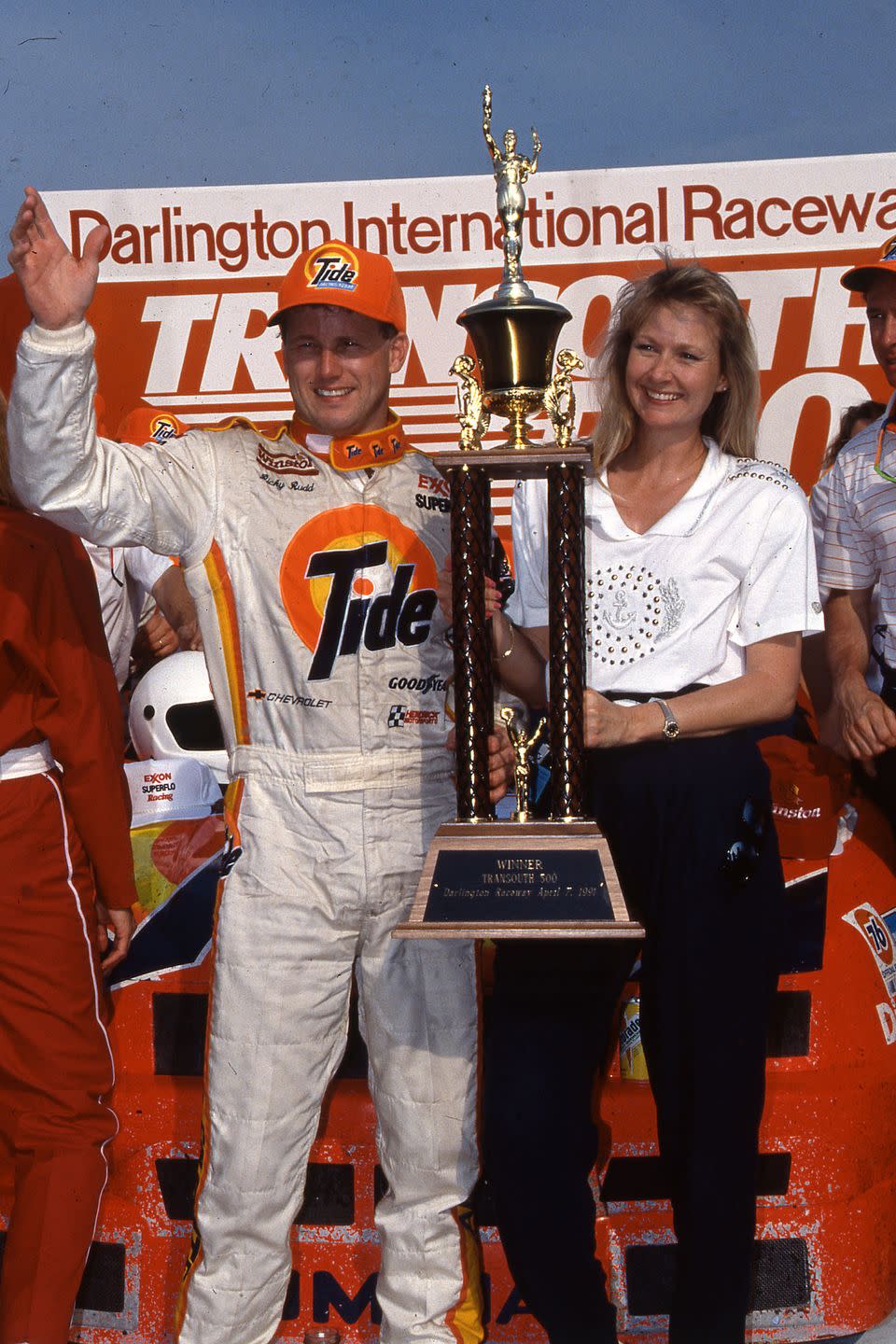
Cliff Daniels, crew chief for 2021 Cup Series champion Kyle Larson, enjoys the challenges of Darlington, some of which go beyond the difference in the ends. “Every aspect of the track is so much fun,” he said at mid-week. “It’s got the character of bumps, different lanes, and different-aged asphalt. You’ve got the patch of pavement (Turns) 1-2 that is newer and has a lot of grip. The rest of the track doesn’t have much grip. It’s a great track because it’s so challenging. That’s why we love going there.”
Darlington’s difficulty has generated several nicknames, only two of which are repeated here: “The Lady In Black” because its original surface was black highway-like asphalt and, more recently, “Too Tough To Tame.”
To which the late three-time NASCAR champion David Pearson would say, “Oh, please. Are you kidding me?” The South Carolina native won 10 times, had 14 more top-5 finishes, and 28 total top-10s at Darlington for four owners. Generally accepted as the sport’s coolest and most calculating driver, he won twice with Holman-Moody, once each with Rod Osterlund and Hoss Ellington, and six times between 1972-1977 with the Wood Brothers.
During one stretch of his career, he was either first, second, or third in eight of nine Darlington races. At another time, he was first or second in five consecutive Darlington races. Perhaps appropriately, the last two of his 105 career victories were there: with Osterlund in 1979 (subbing for the injured Dale Earnhardt) and his 105th, with Ellington in 1980.
“We hit it right off the first race,” said Leonard Wood, crew chief when his family’s No. 21 Ford/Mercury teams won 43 races with Pearson over parts of 1972-1979. “His driving style fit ours; he knew how to enter a corner and exit a corner. I knew what he wanted in the car and he knew what line was the best for his setup. You’d insult him if you started to tell him which line to take.
“You can teach drivers how to do things and make good drivers out of them. Guys can be taught. But the guys who have a little edge on you are the ones who were born with something the others don’t have. He had that. I worked with some of the best drivers in the world (among them, A.J. Foyt, Cale Yarborough, Dan Gurney, and Jimmy Clark) and David Pearson was the best, especially at Darlington.”
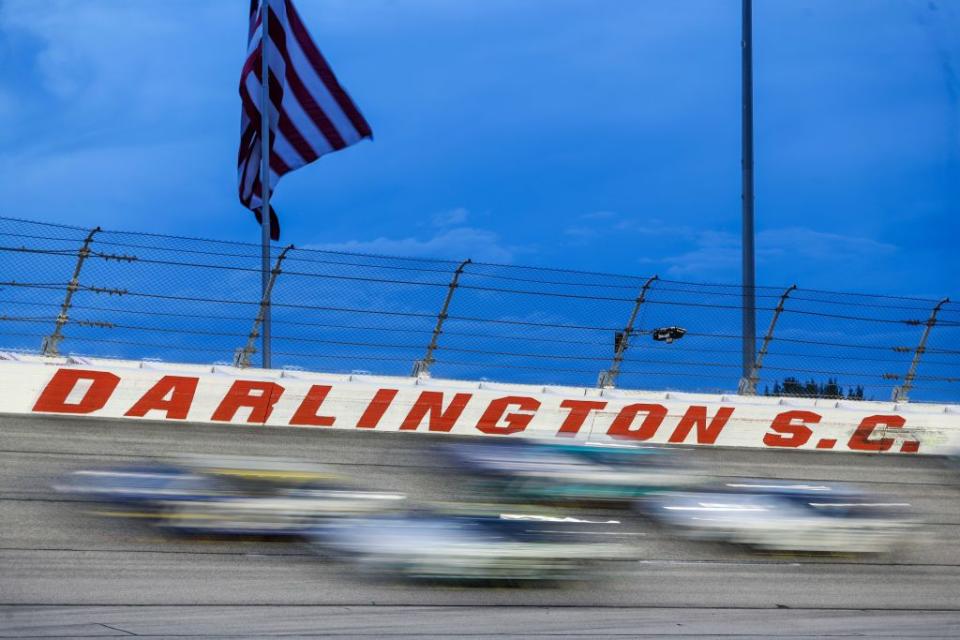
The track’s inaugural Southern 500 on Labor Day of 1950 is generally considered one of NASCAR’s most important events. It was the young sanctioning body’s first paved-track race and its first 500-miler. Its 20 previous Cup Series races – beginning with eight in 1949 – had been on dirt tracks, most of them shorter than a mile. NASCAR president Bill France was uneasy about his cars running 500 miles on a track that long. He was afraid that a bad show with cars blowing up or wrecking would give NASCAR a black eye.
Brasington paid a then-record $25,000 purse, limited the grid to 75 cars, and started ‘em three-wide in a salute to the Indy 500. In a grueling endurance race that attracted 25,000 fans, Johnny Mantz won by nine laps over Fireball Roberts. The race was slowed only twice for 13 laps, but still took more than six-and-a-half hours. Oddly enough, after being the absolute slowest in two weeks of qualifying, Mantz dominated by leading the final 350 laps.
This weekend’s Goodyear 400 is the 124th Cup race at Darlington, which now measures 1.366 miles after several redesigns. It’s NASCAR’s annual “throwback weekend” in which many teams field cars that reflect their glory days. NASCAR’s recently announced 75 Greatest Drivers (or their representatives) will be recognized in pre-race ceremonies.
Cup teams will practice and qualify on Saturday, then run their 293-lap, 400-mile race on Sunday afternoon. The Craftsman Truck Series has a 147-lap, 200-mile race Friday night and the Xfinity Series has a 147-lap, 200-mile race Saturday afternoon.
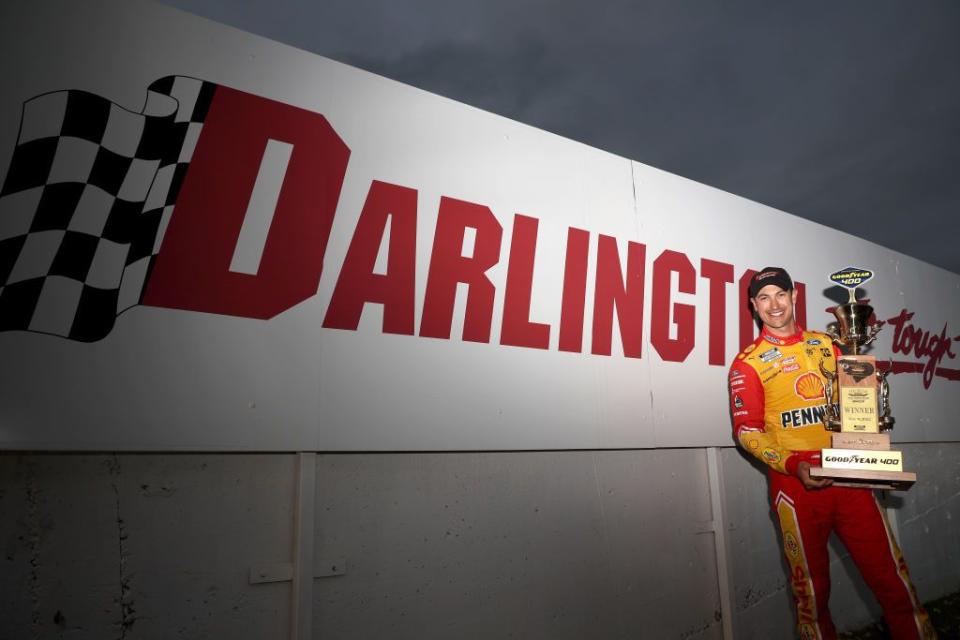

 Yahoo Autos
Yahoo Autos 